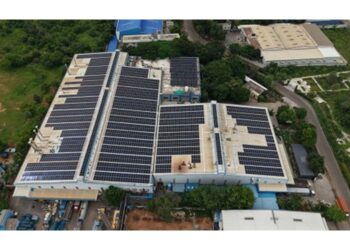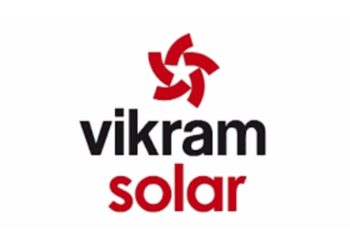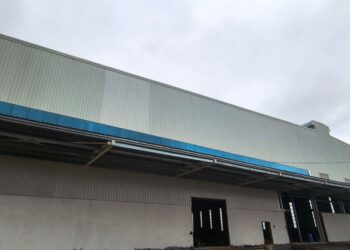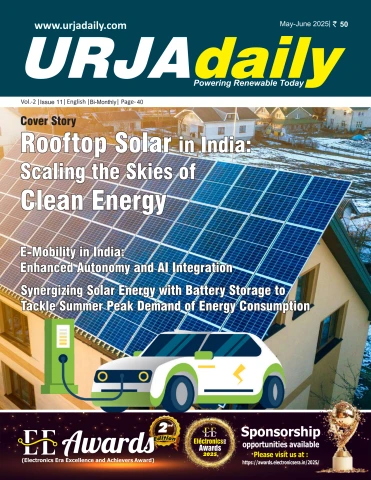The rising usage of fossil fuels for electricity generation and transportation is negatively impacting the environment. This has also resulted in environmental issues like global warming. The increasing depletion of fossil fuels and their impact on the ecosystem has heightened the demand for renewable energy sources. One of the credible renewable energy sources is solar power.
Governments across the globe are introducing multiple initiatives to expand the solar energy sector. These initiatives have heightened the number of commercial, residential, and non-residential users of solar power, contributing to the growth of the solar power equipment market. These equipment involve storage systems, solar panels, mounting, rocking, and tracking systems. The industry is predicted to witness an impressive CAGR of 11.3% by 2030.
Bifacial solar panels for increased electricity generation
Bifacial solar panels are gaining momentum due to their ability to capture sunlight from the back and front sides of the module. This versatile design uses reflected sunrays for higher electricity yield. Technological evolution in bifacial solar panels is further optimizing the potential of the renewable energy sector.
These highly efficient and versatile panels are useful in multiple systems including large-scale solar farms and commercial photovoltaic installations. This enhances the economic feasibility of solar energy. However, manufacturers are developing advanced versions to improve the efficiency of this advanced technology. For instance, the US subsidiary of Chinese PV manufacturer Sunova Solar, Thornova Solar, introduced its latest bifacial TOPCon PV module in March 2024. This module can be used in large-scale solar projects.
The product weighs 38.5 Kg and has a temperature coefficient of –0.29% per Celsius. It also has a transparent white back sheet with an anti-reflective coating. It possesses a 30-year performance warranty and a 15-year product warranty.
Emergence of lightweight and flexible models
In the past few years, advances in materials and manufacturing techniques have opened new avenues of growth for several industries. Manufacturers have designed lightweight, thin, and flexible panels by combining these advances. The flexibility is very high, so these panels easily fit onto curved surfaces.
The lightweight design is easy to install for spacecraft, buildings, and vehicle systems. Moreover, the flexible nature of the panels streamlines unconventional installations such as integration into backpacks and clothing.
Flexible solar sheets are easy to install and transport, which is advantageous in remote environments with limited power sources. Their high adaptability and versatility make power generation sustainable as well as accessible. Researchers at MIT introduced lightweight fabric solar cells that generate 18 times more electricity and can be used for developing solar sheets. These cells are thinner than a human hair and weigh one-hundredth of conventional solar panels.
Smart inverters for advanced energy storage infrastructure
Smart inverters regulate electricity flow in energy systems. Conventional inverters transform DC output into AC for commercial and residential use. Furthermore, smart inverters advance this function with innovative features to manage electricity flow.
These inverters meet real-time demand by adjusting the frequency of the AC output and voltage for optimal power usage and transfer. These adjustments are made by monitoring energy consumption and generation patterns, which maximize solar energy usage.
Their integration into storage systems can store excessive power produced during peak production hours. This stored energy is used later when demand is higher. With this function, solar panel owners control their power usage, boost self-consumption, and reduce dependency on grids. This ultimately minimizes electricity costs and improves energy independence.
AI integration for a solar-based future
The technology of AI is changing the maintenance, installation, and manufacturing of solar power equipment. AI can recognize patterns through use of ML algorithms and regulate energy intake in real time to optimize equipment performance.
Furthermore, AI can regulate and monitor different components of the solar power equipment that involve efficient working, power distribution, and sun position. Also, equipment can withstand volatile climate conditions with AI, which boosts their performance. AI algorithms also predict equipment failures and schedule maintenance. This minimizes downtime and reduces costs regarding emergency repairs.
Gautam Solar introduced N-type TOPCon solar modules in October 2023
Gautam Solar launched its IEC and UL certified N-type TOPCon modules at the REI expo 2023. These modules are perfect for ground-mounted plans. They have a wattage range of 565-580 Wp. The module consists of 144 half-cut cells manufactured via a non-destructive cutting process, which lowers the chances of microcracks.
To conclude, solar power equipment is an integral part of renewable energy infrastructure. Advancements including bifacial solar panels, lightweight and flexible materials, smart inverters, and AI are enhancing the efficiency of these equipment. However, investments in R&D and the discovery of innovative products are predicted to expand the industry in the upcoming era.













